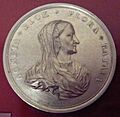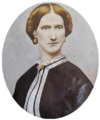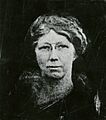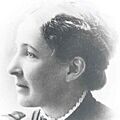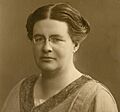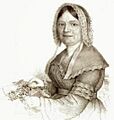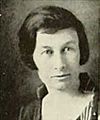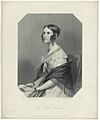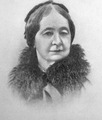List of women botanists facts for kids
A botanist is a scientist who studies plants. This includes everything from tiny mosses to giant trees, and how they grow, live, and interact with their environment. For a long time, science was mostly seen as a job for men. But many amazing women have made huge contributions to botany, even when it was hard for them to do so.
This article celebrates some of these incredible women botanists. They explored new lands, discovered new plants, drew beautiful illustrations, and helped us understand the plant world better. Their work has been super important for science and for protecting nature.
Contents
What is a Botanist?
A botanist is like a plant detective! They study plants in many ways. This can include how plants grow, how they make food, how they reproduce, and how different plants are related to each other. Botanists also learn about how plants fit into their ecosystems, like forests or deserts.
Different Kinds of Botanists
There are many types of botanists. Some study tiny plant cells, while others explore jungles to find new species. Here are a few examples:
- Plant Taxonomists are like organizers. They identify, name, and classify plants. This helps scientists keep track of all the different plant species on Earth.
- Ecologists study how plants interact with their environment and other living things. They look at how plants survive in different places.
- Paleobotanists are like plant historians. They study ancient plants using fossils. This helps us understand how plants have changed over millions of years.
- Mycologists specialize in fungi, which are often studied alongside plants because they share similar habitats and roles in nature.
- Botanical Illustrators draw and paint plants with great detail. Their art helps scientists and others identify and learn about plants.
Pioneering Women in Plant Science
Throughout history, many women have been passionate about plants. They often started as amateur gardeners or artists. But their dedication led them to make important scientific discoveries. They faced challenges, but their love for plants helped them push boundaries.
Early Contributions to Botany
Even centuries ago, women were involved in studying plants. They often used their knowledge for medicine or gardening.
- Agnes Block (1629–1704) was a Dutch botanist and art collector. She was famous for her beautiful gardens and for being the first person in Europe to make a pineapple plant produce fruit!
- Elizabeth Blackwell (1707–1758) was a Scottish botanical illustrator. She created a huge book of plant drawings to help her husband get out of debt. Her detailed illustrations were very important for doctors and apothecaries (early pharmacists).
- Jane Colden (1724–1766) was an American botanist. She is often called the first female botanist in America. She studied and described many plants in New York.
Women Who Explored and Discovered
Some women botanists were brave adventurers. They traveled to far-off places to find and study new plants.
- Jeanne Baré (1740–1807) was a French explorer. She was the first woman to sail around the world! She disguised herself as a man to join a scientific expedition and collected many plant specimens.
- Amalie Dietrich (1821–1891) was a German naturalist. She traveled to Australia and collected thousands of plant and animal specimens for museums.
- Ynes Mexia (1870–1938) was a Mexican-American botanist. She started her botanical career later in life but became a fearless explorer. She collected over 150,000 plant specimens, many of them new to science, from remote areas of North and South America.
Modern Women in Botany
In more recent times, women have continued to excel in all areas of botany. They have held important positions in universities and research institutions.
- Katherine Esau (1898–1997) was a German-American botanist. She was a leading expert in plant anatomy, which is the study of the internal structure of plants. Her textbooks are still used today!
- Irene Manton (1904–1988) was a British botanist. She used powerful microscopes to study the tiny structures inside plant cells, especially algae. Her work helped us understand how plant cells are built.
- Lynn Margulis (1938–2011) was an American evolutionary biologist. While not strictly a botanist, her work on how cells evolved, especially how plant cells got their chloroplasts (which help them make food), was very important for understanding plant life.
- Sandra Knapp (born 1956) is a British botanist who specializes in the nightshade family (which includes tomatoes and potatoes!). She has discovered and named many new species.
Why Women Botanists Matter
The work of these women, and many others, is crucial. They have helped us understand the incredible diversity of plants on Earth. This knowledge is important for medicine, agriculture, and protecting our planet's natural resources. By studying plants, botanists help us find new medicines, develop better crops, and understand how to protect endangered species and habitats.
Images for kids
See also
- List of botanists
- Lists of women


